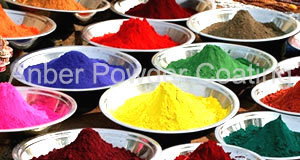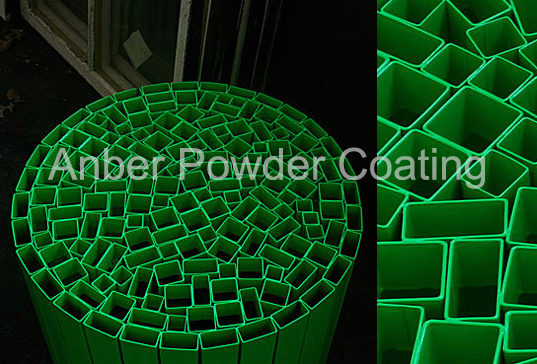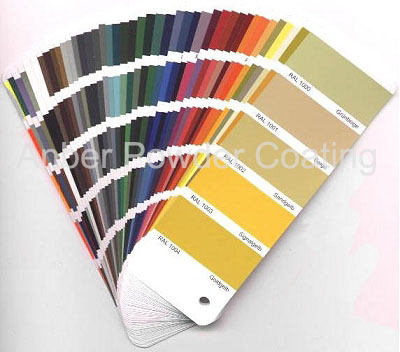 |
|
 |
Plastic powder - material of powder coating line |
|
Tubes covered with powder coatings |
Two basic types of powder coating plastic finishes are available: thermoplastic and thermoset. Typically, purchasers and manufacturers examine overall costs and potential coating complexity when deciding which type is most appropriate for their application. In each of the two classifications, there are a variety of sub-groups, and each individual powder is engineered for specific finish qualities.
Thermoplastics
Thermoplastics are synthetic materials that can be formed multiple times. High temperatures can melt thermoplastics, which is beneficial for reforming and recycling them but not ideal for situations where a part might be exposed to intense heat. However, several thermoplastics used as powder coats are favored for their wear- and chemical-resistance.
Nylon
Nylonpowder coatis extremely durable and impact resistant. It offers excellent protection against chemicals and solvents and is FDA approved for food contact. Parts covered with nylon include food handling and dishwasher baskets. Nylon also has a very low friction coefficient, making it useful as a coating on gears and conveyor equipment.
Polyvinyl Chloride (PVC)
PVC coatings are pliable, sleek and durable. Like nylon coatings, they are also FDA approved for food contact, and can be used for a number of similar applications. They also are great electrical insulators for electrical lines, and work well as coatings for chain link fencing. Environmental groups, like Greenpeace, have advocated phasing out PVC because of harmful byproducts, but tests on the subject remain inconclusive.
Polyolefin
Polyolefin finishes are significantly resistant to abrasives and chemical, and offer a smooth surface and excellent adhesion properties. Due to these benefits, polyolefin coatings are used on lab equipment components that require regular cleanings.
Polyester
Polyester coatings weather well, look great and are resistant to abrasions. They find use in outdoor furniture, exposed automobile parts such as leaf and strut springs and are available in a diverse pallet of colors. Some polyester powders are architecturally certified for building exteriors as they shield the elements and maintain their color with only minor fading over the years.
Thermosets
Thermoset powder coating is applied the same way as thermoplastic powders. Unlike thermoplastic, thermosets go through a chemical cross-linking reaction that is non-reversible when baked. This cross-linking changes the physical properties of the plastic, typically hardening them into a solid coating. Some thermosets have the ability to withstand temperatures of over 1,000 degrees Fahrenheit and can compete with high temperature enamel paints. Thermosets cure harder than thermoplastics, and as some of these thermosets harden, they also become brittle, especially in thicker coats.
Epoxy
Epoxy coated surfaces are hard and electrically insulative. They are brittle, however, and when exposed to UV light (present in sunlight) they tend to chalk and dull over time. This disadvantage keeps most epoxy-coated items indoors or buried underground as pipe coatings.
Epoxy-Polyester Hybrid
Adding polyester to an epoxy makes a softer plastic that is less likely to chip or crack. Often simply known as ˇ°hybridˇ± coatings, they do slightly better outdoors than straight epoxies, showing less chalking and better weathering. Their properties are similar to pure polyesters in terms of impact resistance and durability. Their applications include office furniture, fire extinguishers and toys.
Acrylic
Unlike epoxy-based resins, acrylics do well in sunlight and blend over a surface, leaving a high gloss, wet-looking finish that is either clear or pigmented. At present, their use as automobile clear-coat is still in development due to their brittle hardness and lack of durability. Acrylics are nonetheless used extensively on certain automotive parts, such as wheels and exposed engine parts, where the owner wants this super gloss finish.
Silicon-Based Powders
High temperature powders are composed of silicone resins, curing catalysts and glass filler materials. These are used as exhaust system finishes in automotive and motorcycle parts and racks for ovens and barbecues. As they are able to withstand temperatures of over 1,000 degrees Fahrenheit, they can compete with high temperature enamel paints.




